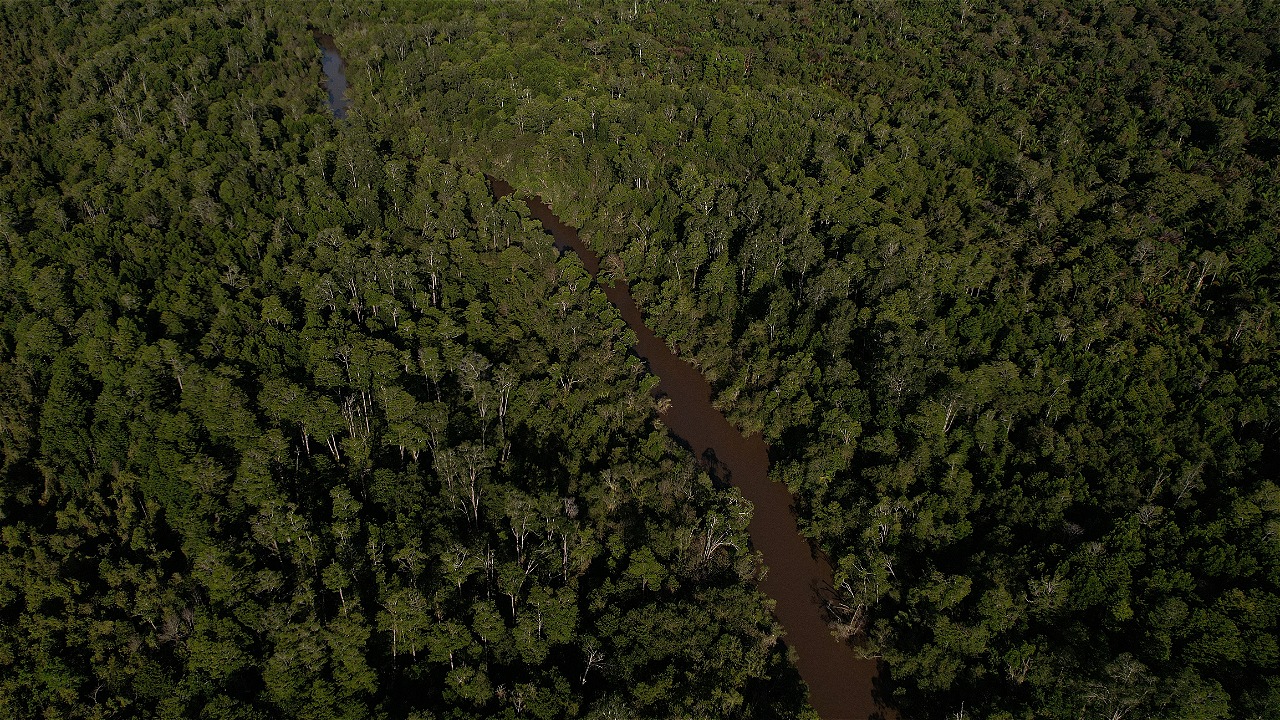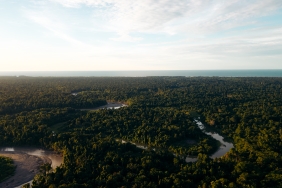STAND GUARD OVER THE "SAVINGS" AND "BANKS" OF LIFE AND CULTURE
By: Bernadus Ronald Jeffry Tethool (Field Coordinator Boven Digoel) and Leo Jahnsen Yembise (Community Outreach Officer)
Kaspar Mukri was stunned for a moment to calm down from his emotions after telling a long story about the oil palm company's plan to clear the forest and customary territory of the Auyu Tribe in Yare Village, Boven Digoel District.
Kaspar Mukri, as one of the customary elders of Yare Village, Boven Digoel District, strongly opposes the plan of oil palm companies to clear forests in his customary territory. Because for Kaspar and other communities, the forest in their customary territory is a future savings stored in the form of potential forest products that can meet their daily needs. This was expressed to Leo Jahnsen Yembise, Community Outreach Officer Boven Digoel WWF-Indonesia, during a visit to Yare Village to gather information about the implementation of Free, Prior and Informed Consent (FPIC) to the community.
Kaspar also emphasized that so far the indigenous people of Kampung Yare have learned a lot from the experience of the activities of oil palm plantation companies operating in Boven Digoel District. "Many indigenous peoples have been marginalized and lost important places as a source of life and cultural identity," said Kaspar. So, as a form of rejection of land clearing efforts in their customary territory, Kaspar and other clans in Yare Village made signs in the form of "cross poles" and "traditional houses" in every corner of the boundaries of their customary territory.
If, there are "savings" that must be maintained in Yare Village, it is the same in Getentiri Village which has a "bank" in its customary forest that stores all the necessities of life for its people. That is, Alberth Tenggare, a man of small stature, firm face and firm stance, one of the people who has a strong influence on the Tenggare clan does not want his customary territory to be handed over to oil palm companies.
Alberth Tenggare is known to have a customary area far from his domicile in Miri Village, Jair District. Even though it is far to travel, Alberth always goes down the Digul River to his customary territory to continue to protect and look for garden and forest products for his daily needs. Because for Alberth, his customary area is a "bank" where all the needs of the people of Kampung Miri are stored, ranging from fish, clean water, sago, clean air, trees, swamps, hills and rivers whose water flows calmly.
Conserving Indigenous Forest through LESTARI Program
Alberth is not silent to preserve the customary forest in Yare Village. Alberth made a map of his customary area and negotiated with one of the oil palm companies that wanted to clear land in his customary forest, which finally resulted in an agreement that Alberth's customary area was excluded from the oil palm plantation development area.
In response to the above challenges, WWF-Indonesia through the USAID-funded LESTARI Program in collaboration with the Government of Boven Digoel and indigenous communities has conducted a High Conservation Value Forest (HCVF) assessment, which is an area that has or supports one or more High Conservation Values (HCV). HCV itself is an important attribute as a reference that includes ecological, environmental services, social and cultural values, whose identification procedures are specified in the Indonesian HCV Toolkit.
Based on the HCV toolkit, Kaspar Mukri's "savings" and Alberth Tenggare's "bank" are located at HCV numbers 5 and 6 as areas for meeting the basic needs of local communities. This includes hamlets/sago swamps, water sources, hunting grounds, customary protected forests, gardens, fishing grounds, agarwood forests with a protection radius of 100 - 1,500 meters and other traditional cultural identity areas, such as sacred places, old villages, ancestral journeys, ancestral stopovers, mountains, ancestral graves, ponds/lakes with a protection radius of 100 - 1,000 meters. In the guidelines, it is said that HCV 5 and 6 function to maintain the daily livelihoods of local communities, such as food sources, medicines, building sources, sources of traditional attributes, and cultural historical identity.
In addition, the current Landscape Conservation Plan can be used as a recommendation for the preparation of sustainable development policies such as the preparation or evaluation of KLHS, RAD-GRK/SRAK, RPJMD, evaluation of RTRWK/P, evaluation of the designation of Forest and Aquatic Conservation Areas and National Strategic Areas. The hope is that after intervening in the determination of High Conservation Value Areas at the operational level as a consideration for spatial planning at a more detailed level (RDTR, investment boundaries), the decline in environmental functions through the Adoption of Action Plans (RKBA) in the implementation of programs in each sector can be minimized so that local communities can maintain their customary rights to build cultural wisdom in preserving their nature.




